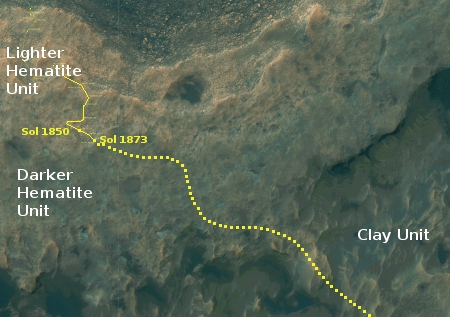New study says recurring dark streaks on Mars are from flowing sand, not water
The uncertainty of science: A new study has concluded that the recurring dark streaks on Martian slopes are caused not from flowing seeps of water but from small sand avalanches.
Continuing examination of these still-perplexing seasonal dark streaks with a powerful camera on NASA’s Mars Reconnaissance Orbiter (MRO) shows they exist only on slopes steep enough for dry grains to descend the way they do on faces of active dunes.
The findings published today in Nature Geoscience argue against the presence of enough liquid water for microbial life to thrive at these sites. However, exactly how these numerous flows begin and gradually grow has not yet been explained. Authors of the report propose possibilities that include involvement of small amounts of water, indicated by detection of hydrated salts observed at some of the flow sites.
The results do not exclude the possibility that water plays a part, but do suggest it plays a much smaller part, or none at all.
The uncertainty of science: A new study has concluded that the recurring dark streaks on Martian slopes are caused not from flowing seeps of water but from small sand avalanches.
Continuing examination of these still-perplexing seasonal dark streaks with a powerful camera on NASA’s Mars Reconnaissance Orbiter (MRO) shows they exist only on slopes steep enough for dry grains to descend the way they do on faces of active dunes.
The findings published today in Nature Geoscience argue against the presence of enough liquid water for microbial life to thrive at these sites. However, exactly how these numerous flows begin and gradually grow has not yet been explained. Authors of the report propose possibilities that include involvement of small amounts of water, indicated by detection of hydrated salts observed at some of the flow sites.
The results do not exclude the possibility that water plays a part, but do suggest it plays a much smaller part, or none at all.






